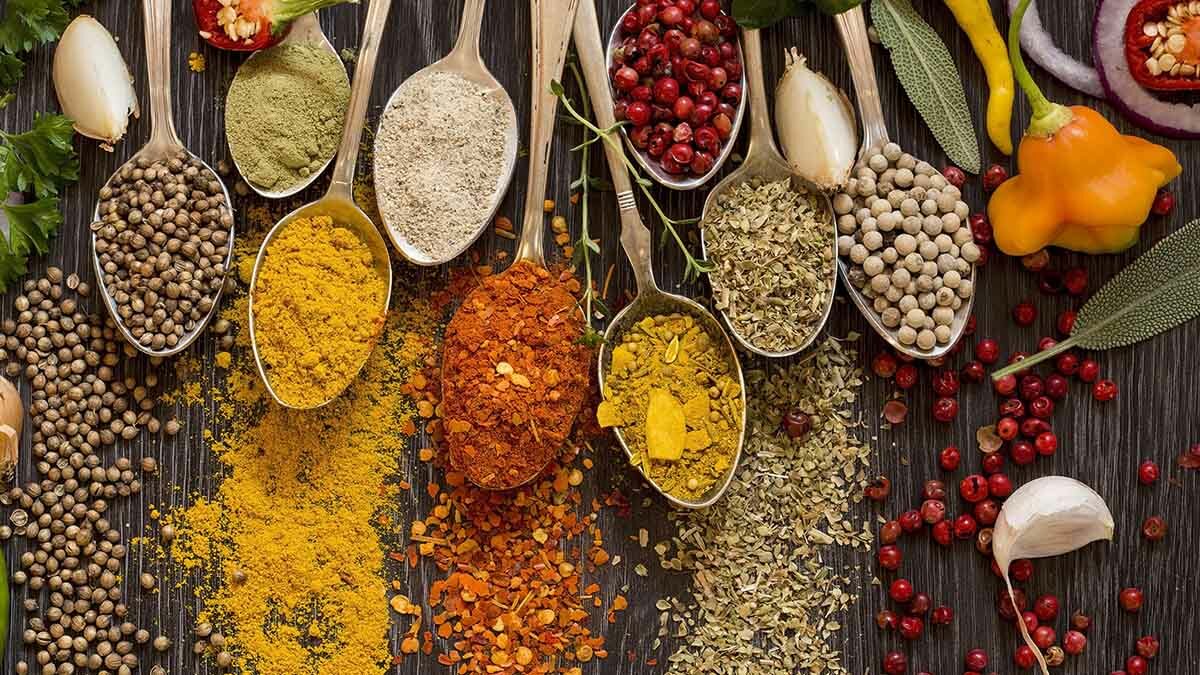Once in a while I come across a study that’s so juicy I have to do a whole video about it (Which Spices Fight Inflammation?).
A group of researchers at the University of Florida, Gainesville and Pennsylvania State set up a brilliant experiment. We’ve known that ounce per ounce, herbs and spices have some of the greatest antioxidant activities known. But that’s only ever been tested in a test tube. Before we can ask if an herb or spice has real health benefits, it is first necessary to determine whether it is bioavailable — whether the active ingredients are even absorbed. This had never been done, until now.
The researchers could have taken the easy route and just measured the change in antioxidant level in one’s bloodstream before and after consumption, but the assumption that the appearance of antioxidant activity in the blood is an indication of bioavailability has a weakness. Maybe more gets absorbed than we think but doesn’t show up on antioxidant tests because it gets bound up to proteins or cells. So the researchers attempted to measure physiological changes in the blood. They were interested in whether absorbed compounds would be able to protect white blood cells from an oxidative or inflammatory injury—whether herb and spice consumption would protect the strands of our DNA from breaking when attacked by free radicals. I cover the DNA findings in my video, Spicing Up DNA Protection. They also wondered if the consumption might alter cellular inflammatory responses in the presence of a physiologically relevant inflammatory insult. What does this all mean?
The researchers took a bunch of people and had each of them eat different types of spices for a week. There were many truly unique things about this study, but one was that the quantity of spices that study subjects consumed was based on the usual levels of consumption in actual food. For example, the oregano group was given a half teaspoon a day—a practical quantity that people might actually eat once in a while. At the end of the week, they drew blood from the dozen or so people they had adding, for example, black pepper to their diets that week, and compared the effects of their blood to the effects of the blood of the dozen subjects on cayenne, or cinnamon, or cloves, or cumin. They had about ten different groups of people eating about ten different spices. Then they dripped their plasma (the liquid fraction of their blood) onto human white blood cells in a Petri dish that had been exposed to an inflammatory insult. The researchers wanted to pick something really inflammatory, so they chose oxidized cholesterol (which is what we’d get in our bloodstream after eating something like fried chicken. If oxidized cholesterol is a new concept for you, please check out its role in heart disease progression in my video Arterial Acne). So they jabbed the white blood cells with oxidized cholesterol and measured how much tumor necrosis factor (TNF) they produced in response.
TNF is a powerful inflammatory cytokine, infamous for the role it plays in autoimmune attacks like inflammatory bowel disease. Compared to the blood of those who ate no spices for a week, black pepper was unable to significantly dampen the inflammatory response. What about any of the other spices? The following significantly stifled the inflammatory response:
- cloves
- ginger
- rosemary
- turmeric
And remember, they weren’t dripping the spices themselves on these human white blood cells, but the blood of those who ate the spices. So the results represents what might happen when cells in our body are exposed to the levels of spices that circulate in our bloodstream after normal daily consumption—not megadoses in some pill. Just the amount that makes our spaghetti sauce, pumpkin pie, or curry sauce taste good.
There are drugs that can do the same thing. Tumor necrosis factors are such major mediators of inflammation and inflammation-related diseases that there are TNF-blocking drugs on the market for the treatment of inflammatory diseases such as osteoarthritis, inflammatory bowel disease, psoriasis, and ankylosing spondylitis, which collectively rake in more than $20 billion a year ($15,000–$20,000 per person per year). At that price, the side effects better be hugs and rainbows. But no, the drugs carry a so-called “black box warning” because they can cause things like cancer and heart failure. If only there was a cheaper, safer solution.
The spice curcumin, the yellow pigment in turmeric, is substantially cheaper and safer, but does it work outside of a test tube? There’s evidence that it may help in all of the diseases for which TNF blockers are currently being used. So with health-care costs and safety being such major issues, this golden spice turmeric may help provide the solution.
See Antioxidants in a Pinch and How to Reach the Antioxidant RDA to see the extent to which even small amounts of spices can affect one’s antioxidant intake.
Another elegant series of “ex vivo” experiments exploring the cancer fighting power of lifestyle changes can be seen in the videos starting with Ex Vivo Cancer Proliferation Bioassay.
Mushrooms (Boosting Immunity While Reducing Inflammation), nuts (Fighting Inflammation in a Nut Shell), and purple potatoes (Anti-Inflammatory Effects of Purple Potatoes) may also reduce inflammation (along with plant foods in general, see Anti-Inflammatory Antioxidants). In fact so well that plant-based diets can be used to treat inflammatory conditions. See, for example, Dietary Treatment of Crohn’s Disease, and Potassium and Autoimmune Disease. Animal products on the other hand may increase inflammation through a variety of mechanisms, including endotoxins (How Does Meat Cause Inflammation?), arachidonic acid (Chicken, Eggs, and Inflammation), and Neu5Gc (The Inflammatory Meat Molecule Neu5Gc).
-Michael Greger, M.D
PS: If you haven’t yet, you can subscribe to my videos for free by clicking here and watch my full 2012 – 2015 presentations Uprooting the Leading Causes of Death, More than an Apple a Day, From Table to Able, and Food as Medicine.
